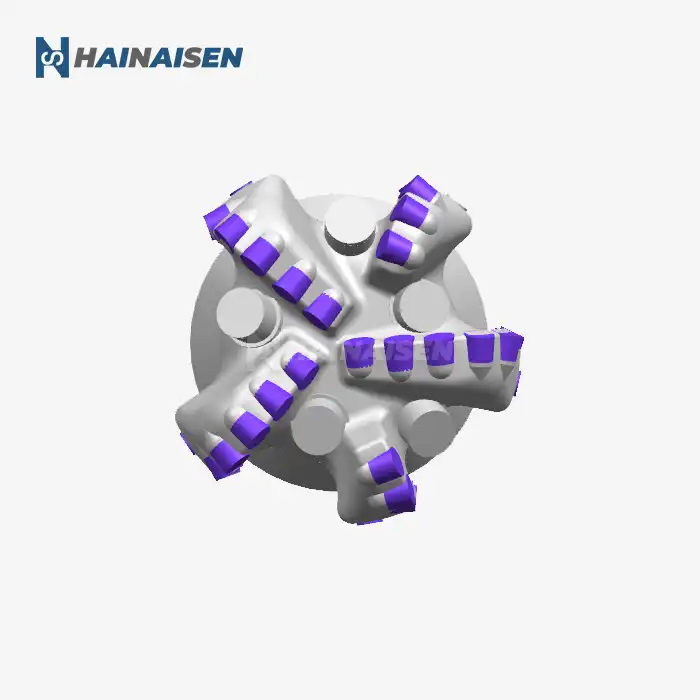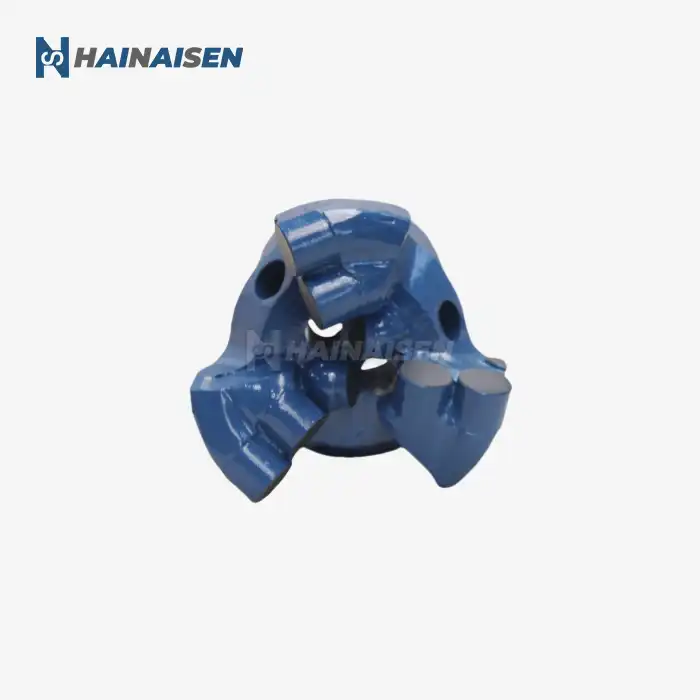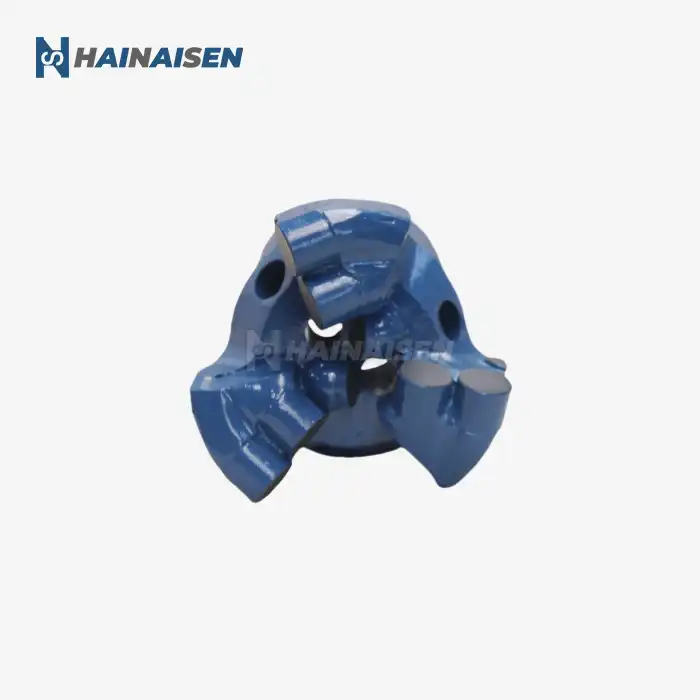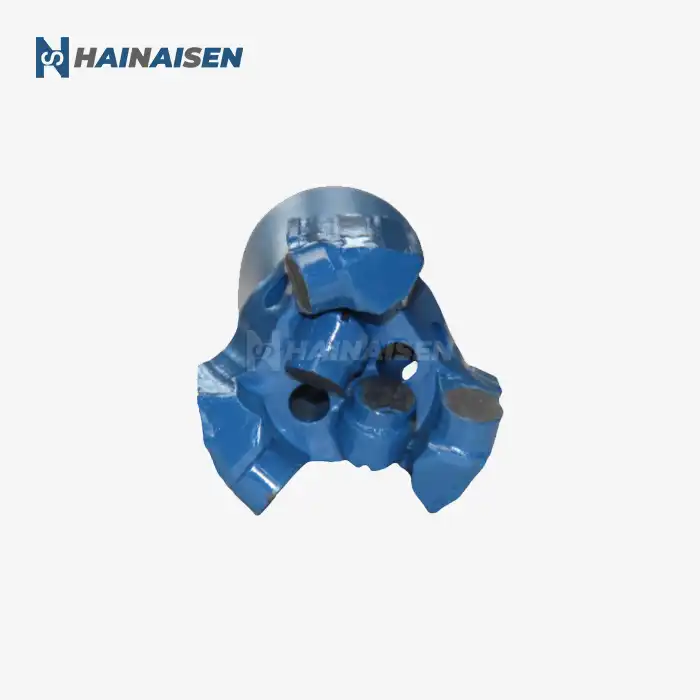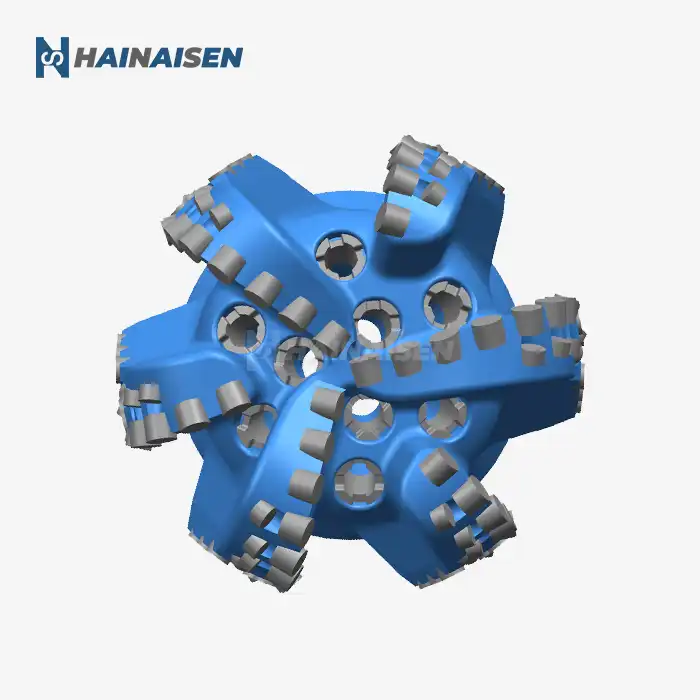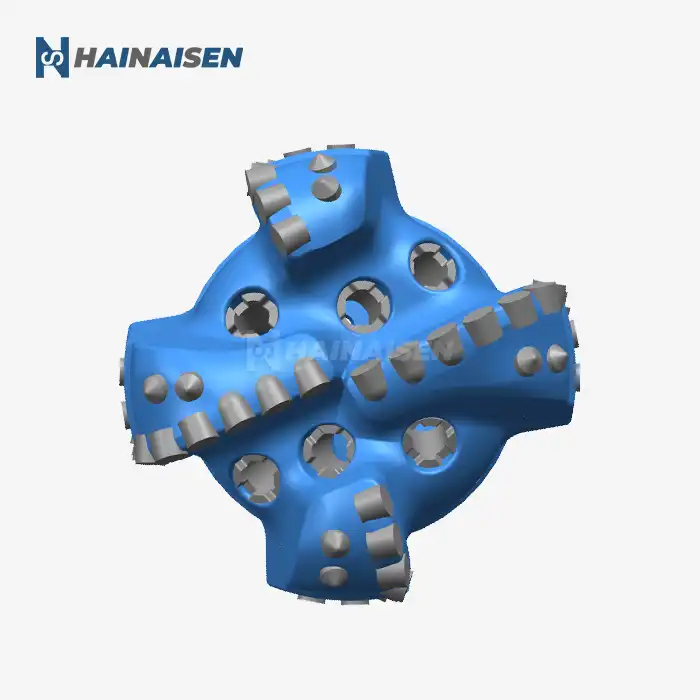What Cutter Layout Enhances Aggressiveness vs Stability Balance?
The cutter layout of a diamond oil drill bit plays a pivotal role in determining its aggressiveness and stability during drilling operations. Achieving the optimal balance between these two factors is essential for maximizing drilling efficiency while maintaining controlled and stable drilling conditions.
Aggressive Cutter Layouts
Aggressive cutter layouts are designed to maximize the rate of penetration (ROP) in softer formations. These layouts typically feature:
- Higher cutter density in the center of the bit
- Larger cutter sizes
- More exposed cutter profiles
- Reduced back rake angles
While aggressive layouts can significantly increase drilling speeds, they may lead to increased vibration and potential bit instability, particularly in harder formations.
Stability-Focused Cutter Layouts
Stability-focused layouts prioritize smooth drilling operations and reduced vibration. These designs often incorporate:
- More evenly distributed cutter placement across the bit face
- Smaller cutter sizes
- Increased back rake angles
- Enhanced gauge protection
Stable layouts are particularly beneficial in harder formations or when drilling through interbedded layers with varying hardness.
Balancing Aggressiveness and Stability
To achieve an optimal balance between aggressiveness and stability, bit designers employ several strategies:
- Utilizing varied cutter sizes and exposures across different regions of the bit face
- Implementing spiral cutter arrangements to promote uniform cutting action
- Incorporating depth-of-cut control features to prevent over-engagement of cutters
- Fine-tuning back rake and side rake angles based on formation characteristics
By carefully considering these factors, engineers can create diamond oil drill bit designs that offer both efficient cutting action and stable drilling behavior across a range of formation types.
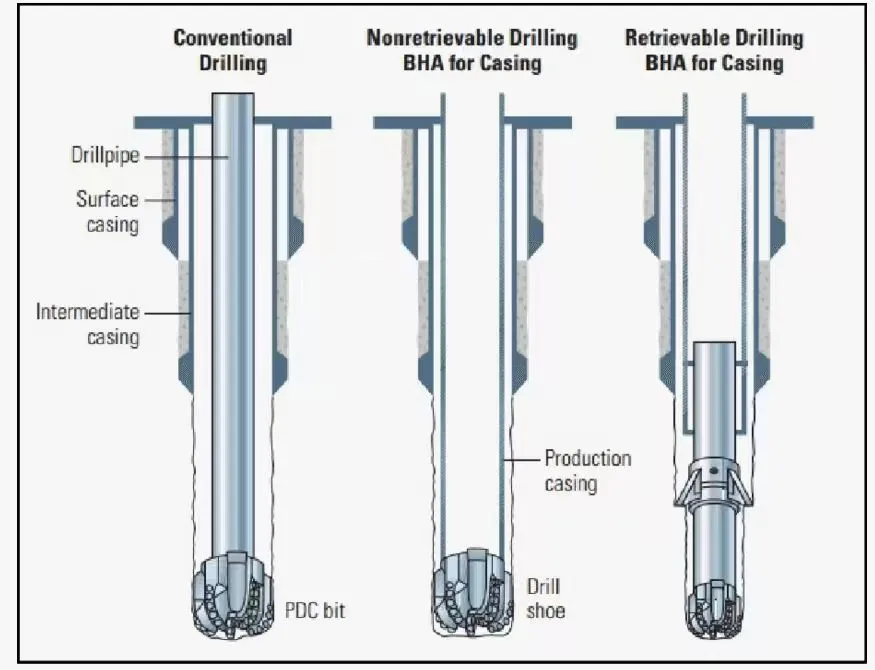
Staggered vs Symmetrical Cutter Patterns—When to Use Each?
The choice between staggered and symmetrical cutter patterns in diamond oil drill bits can significantly impact drilling performance. Each pattern has its own set of advantages and is suited to different drilling conditions and formation types.
Staggered Cutter Patterns
Staggered cutter patterns involve offsetting the placement of cutters across the bit face, creating an asymmetrical arrangement. This design offers several benefits:
- Enhanced cutting efficiency due to reduced tracking
- Improved debris removal and hydraulic flow
- Better performance in soft to medium formations
- Reduced likelihood of bit balling
Staggered patterns are particularly effective when:
- Drilling through heterogeneous formations
- High ROP is prioritized
- Dealing with formations prone to bit balling
Symmetrical Cutter Patterns
Symmetrical cutter patterns feature a more uniform arrangement of cutters across the bit face. These patterns offer:
- Improved bit stability and reduced vibration
- More consistent wear patterns
- Better performance in harder formations
- Enhanced directional control in deviated wellbores
Symmetrical patterns are often preferred when:
- Drilling through homogeneous, harder formations
- Stability and reduced vibration are critical
- Precise directional control is required
Hybrid Approaches
In many cases, bit designers employ hybrid approaches that combine elements of both staggered and symmetrical patterns. These hybrid designs aim to leverage the benefits of both configurations, tailoring the cutter layout to specific formation characteristics and drilling objectives.
Factors influencing the choice between staggered and symmetrical patterns include:
- Formation hardness and abrasiveness
- Expected ROP requirements
- Wellbore stability considerations
- Directional drilling needs
- Hydraulic optimization goals
By carefully evaluating these factors, engineers can select the most appropriate cutter pattern for a given drilling application, optimizing the performance of diamond oil drill bits in various operational scenarios.
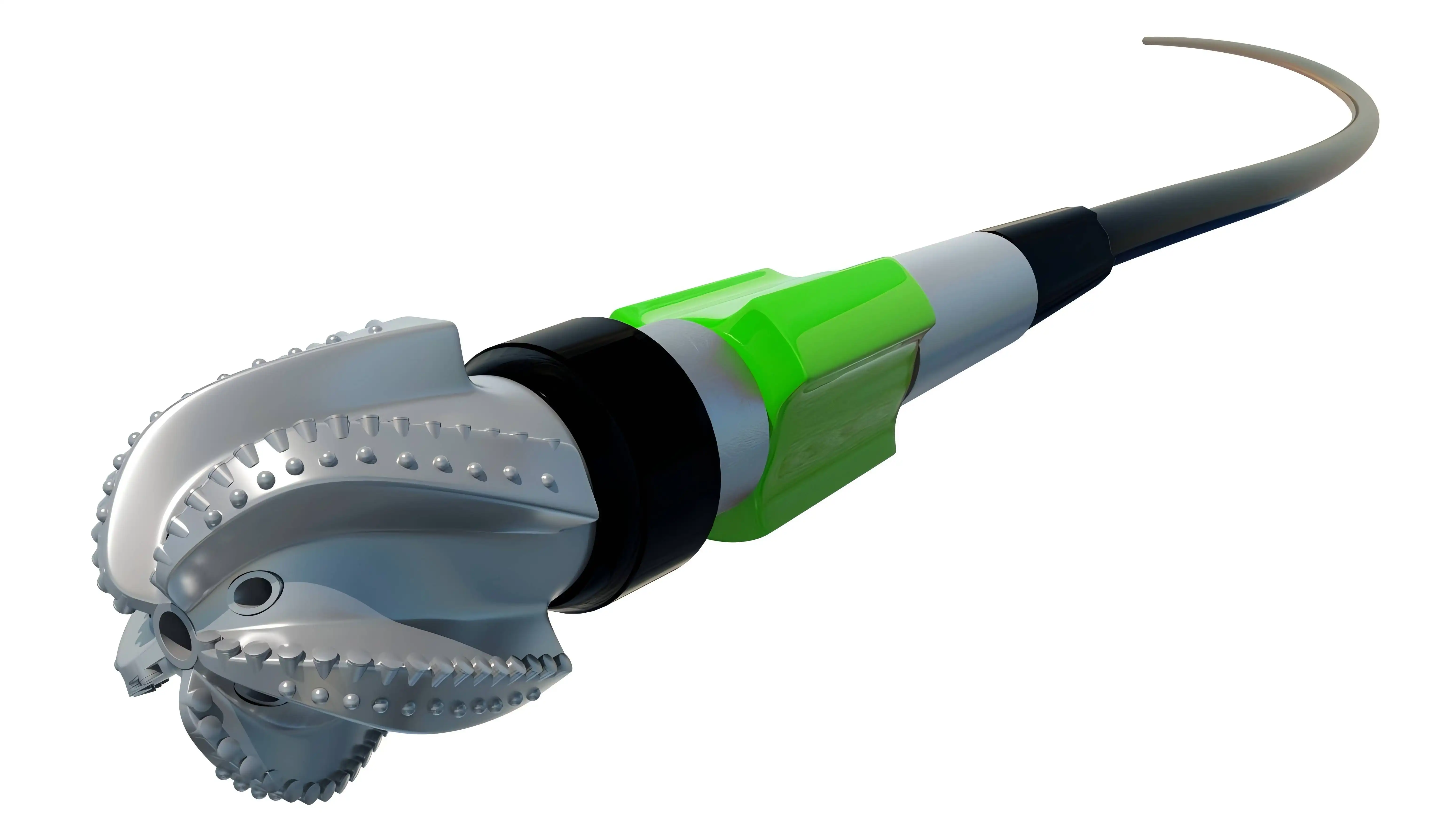
Layout Guidelines for Tropicalizing Cutter Life and Hole Quality
Optimizing cutter layout for enhanced cutter life and improved hole quality is crucial in designing effective diamond oil drill bits. By implementing specific layout guidelines, bit designers can significantly improve the durability of cutters and the overall quality of the drilled hole.
Cutter Density and Distribution
Proper cutter density and distribution are essential for maximizing cutter life and maintaining hole quality. Consider the following guidelines:
- Optimize cutter count based on formation characteristics and bit size
- Ensure even distribution of cutting forces across the bit face
- Implement variable cutter spacing to reduce tracking and improve cutting efficiency
- Utilize spiral arrangements to promote uniform wear patterns
Cutter Exposure and Engagement
Controlling cutter exposure and engagement is critical for balancing aggressiveness and stability:
- Adjust cutter exposure based on formation hardness and expected drilling conditions
- Implement stepped cutter profiles to manage depth of cut and prevent overloading
- Utilize varied cutter sizes to optimize cutting action across different regions of the bit face
- Consider incorporating backup cutters to extend bit life and maintain cutting efficiency
Hydraulic Optimization
Effective hydraulic design is crucial for cutter cooling and debris removal, impacting both cutter life and hole quality:
- Design nozzle placement and orientation to maximize flow across the bit face
- Implement junk slots and fluid channels to facilitate efficient cuttings evacuation
- Consider hydraulic impact on cutter cooling when determining cutter placement
- Optimize flow distribution to prevent bit balling and maintain consistent cutting action
Gauge Protection and Stability Features
Enhancing gauge protection and incorporating stability features can significantly improve hole quality and bit durability:
- Implement active gauge protection with strategically placed cutters or wear-resistant elements
- Utilize stepped gauge designs to improve stability and reduce vibration
- Consider incorporating depth-of-cut control elements to prevent over-engagement in harder formations
- Implement spiral stabilizer pads to enhance bit stability and maintain consistent hole diameter
Formation-Specific Considerations
Tailoring cutter layout to specific formation characteristics is essential for optimizing cutter life and hole quality:
- Adjust cutter back rake and side rake angles based on formation abrasiveness and hardness
- Consider implementing dual-row or multi-row cutter configurations for improved stability in interbedded formations
- Utilize specialized cutter technologies (e.g., enhanced diamond tables, non-planar interfaces) for challenging formation types
- Implement formation-specific hydraulic designs to address unique cutting removal and cooling requirements
By adhering to these layout guidelines and considering formation-specific factors, engineers can design diamond oil drill bits that offer extended cutter life and superior hole quality across a wide range of drilling applications.
Conclusion
Optimizing cutter situation in precious stone oil penetrate bits is a complex however pivotal viewpoint of bit plan that essentially impacts boring execution, productivity, and by and large well development costs. By carefully considering components such as cutter format for forcefulness vs. soundness, the choice between stunned and symmetrical designs, and executing format rules for improved cutter life and gap quality, boring engineers and bit originators can make profoundly viable penetrating devices custom fitted to particular arrangement characteristics and operational requirements.
As the oil and gas industry proceeds to confront progressively challenging penetrating situations, the significance of progressed bit plan and optimization strategies cannot be exaggerated. By leveraging the best hones laid out in this article, administrators can accomplish moved forward infiltration rates, amplified bit life, and predominant gap quality, eventually driving to more effective and cost-effective penetrating operations.
FAQ
1. What are the key factors influencing cutter placement in diamond oil drill bits?
Key factors influencing cutter placement include formation characteristics, desired aggressiveness vs. stability balance, hydraulic considerations, and overall bit profile design. Engineers must carefully consider these elements to optimize bit performance for specific drilling conditions.
2. How does cutter placement affect drilling efficiency?
Cutter placement directly impacts drilling efficiency by influencing the bit's ability to effectively engage and remove formation material. Proper placement can enhance penetration rates, improve stability, and extend bit life, leading to more efficient drilling operations.
3. What are the advantages of using staggered cutter patterns?
Staggered cutter patterns offer benefits such as improved cutting efficiency, enhanced debris removal, and better performance in soft to medium formations. They can also help reduce the likelihood of bit balling and tracking issues.
4. How can cutter layout be optimized for challenging formation types?
Optimizing cutter layout for challenging formations involves adjusting cutter density, exposure, and engagement based on formation characteristics. Implementing specialized cutter technologies, tailored hydraulic designs, and formation-specific stability features can also enhance bit performance in difficult drilling conditions.
Diamond Oil Drill Bit Manufacturers | HNS
Looking for high-quality jewel oil bore bits custom-made to your particular boring needs? Shaanxi Hainaisen Petroleum Innovation Co., Ltd. is your trusted accomplice for inventive penetrating arrangements. Our progressed fabricating office and experienced R&D group are committed to conveying cutting-edge bit plans that maximize boring productivity and performance.
Whether you're included in oil and gas extraction, coal mining, or geographical studying, we have the ability to give customized penetrate bit arrangements that meet your one of a kind prerequisites. Our state-of-the-art generation office, prepared with 19-axis machining centers and CNC machine instruments, guarantees accuracy fabricating and reliable quality over all our products.
To discuss your diamond oil drill bit needs or request a custom design, reach out to our team of experts today. Contact us at hainaisen@hnsdrillbit.com and discover how our innovative bit designs can revolutionize your drilling operations.
References
1. Smith, J.R. and Brown, T.L. (2020). Advanced Cutter Placement Strategies for PDC Drill Bits. Journal of Petroleum Technology, 72(5), 62-68.
2. Chen, W., Xiao, L., and Liu, G. (2019). Optimization of Diamond Drill Bit Design Using Computational Fluid Dynamics. International Journal of Rock Mechanics and Mining Sciences, 124, 104-112.
3. Johnson, A.K. and Williams, R.E. (2021). Balancing Aggressiveness and Stability in PDC Bit Design for Challenging Formations. SPE Drilling & Completion, 36(2), 145-157.
4. Nguyen, T.H. and Thompson, P.D. (2018). Innovative Cutter Layout Techniques for Enhanced PDC Bit Performance. Proceedings of the IADC/SPE Drilling Conference and Exhibition, Fort Worth, Texas, USA.
5. Roberts, S.L. and Davis, M.J. (2022). Advancements in Diamond Drill Bit Technology for Improved Drilling Efficiency. Journal of Petroleum Science and Engineering, 208, 109-121.
6. Zhang, Y., Li, X., and Wang, R. (2020). Experimental Study on the Effects of Cutter Layout on PDC Bit Performance in Hard Rock Formations. Rock Mechanics and Rock Engineering, 53(8), 3745-3759.



